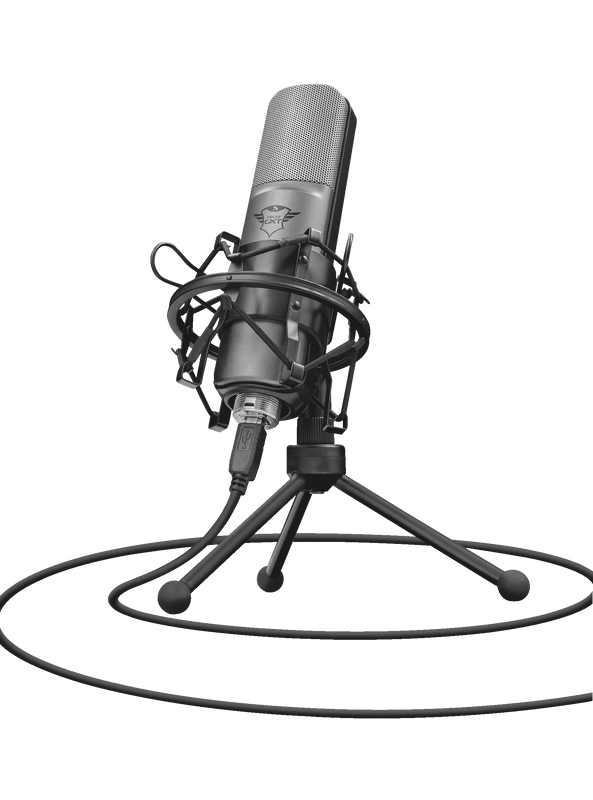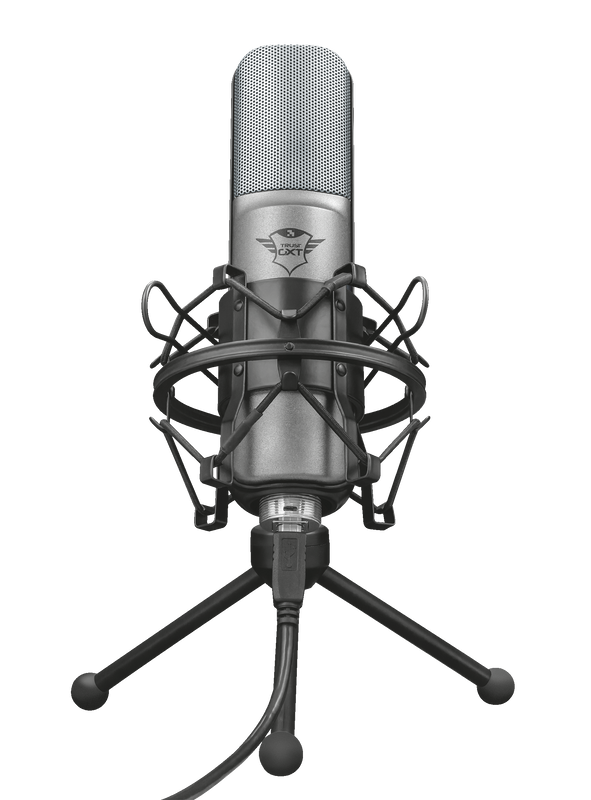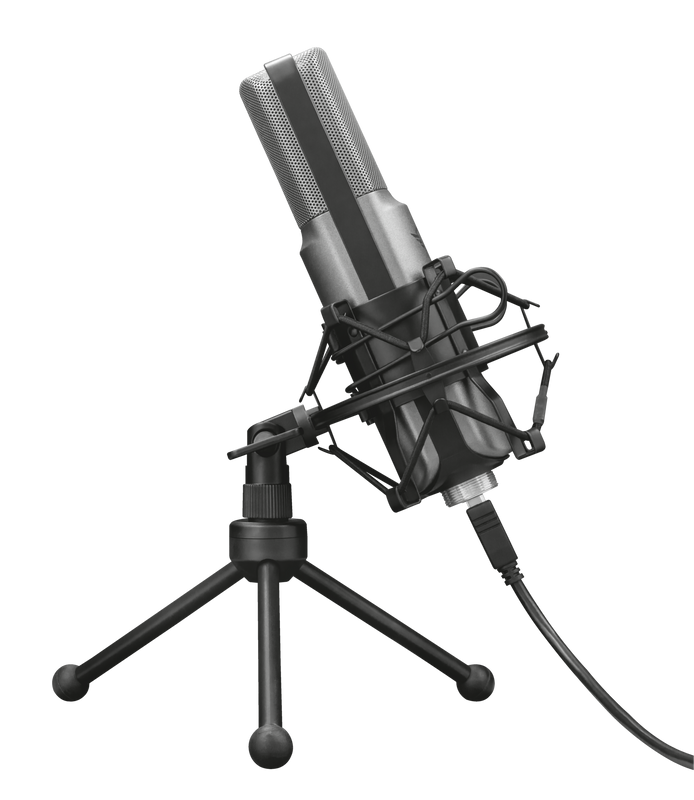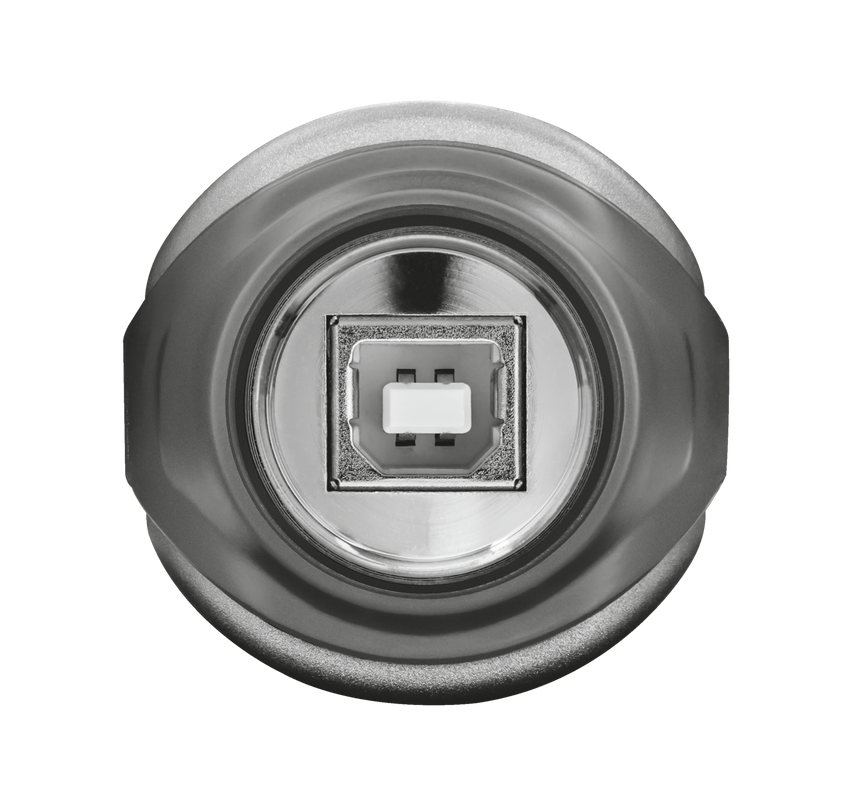GXT 242 Lance
USB-микрофон для потоковых трансляций со стойкой и высокоточной кардиоидной диаграммой направленности; для потоковой передачи, подкастинга, озвучания и акустической музыки
Ваши комментарии во время игр достаточно интересны, чтобы их услышали все? Вы готовы поделиться своей новой песней? Микрофон GXT 242 Lance фиксирует все звуки, обеспечивая их идеальное воспроизведение. Этот USB-микрофон для потоковых трансляций имеет поставку на трех ножках и высокоточную кардиоидную диаграмму направленности для идеальной фиксации потоковой передачи, подкастов, озвучания и акустической музыки.

Основные возможности
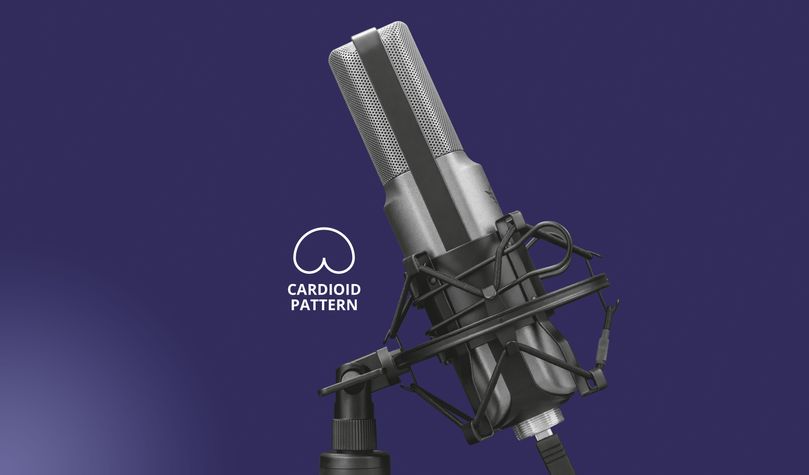
В центре внимания
Воспроизведение насыщенного звука возможно благодаря кардиоидной диаграмме направленности, обеспечивающей высокую точность записи и минимальный фоновый шум. Какой бы подиум вы не выбрали, четкость звукозаписи делает этот микрофон идеальным для подкастов, видеоблогов, голосового озвучивания, записи музыки или потоковой трансляции на YouTube.
Пронизывающие звуки
Микрофон Lance оснащен поп-фильтром, который обеспечивает улучшенное качество воспроизведения голоса. Вы можете использовать голос в полную силу, ведь поп-фильтр нивелирует взрывные звуки (такие как «п» и «б») и шипение. Это гарантирует, что все услышат вас четко без необходимости дополнительного редактирования. Микрофон GXT 242 Lance пронзит ваших слушателей идеальным звуком!
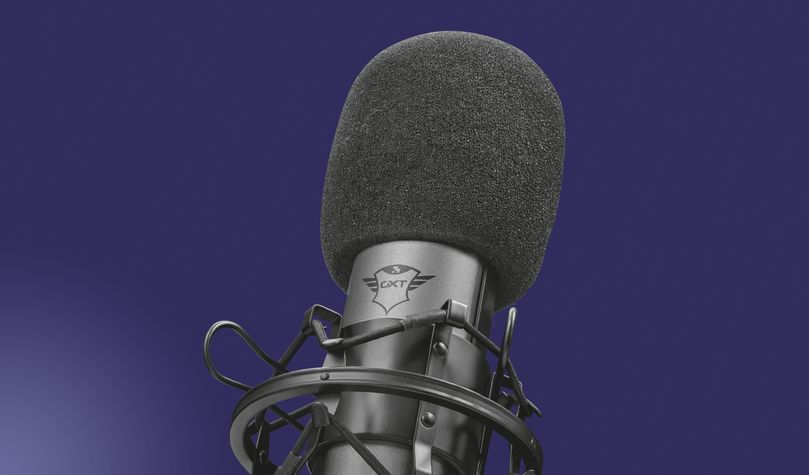
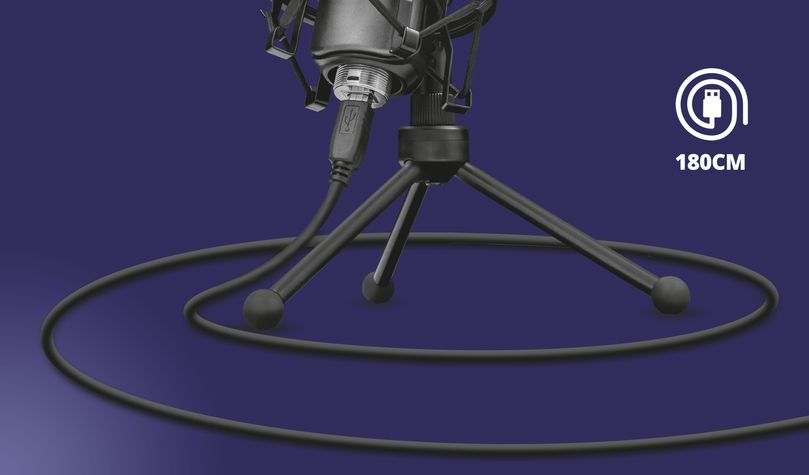
Подключайте и пойте!
Микрофон Lance имеет подставку на трех ножках, которая позволяет зафиксировать его в идеальном положении. Отрегулируйте угол наклона — и вас будет прекрасно слышно всей аудитории. Просто подключите USB-кабель длиной 1,80 м, и микрофон мгновенно сработает на любом ПК или ноутбуке.
Технические характеристики
Features
Size & Weight
General
Connectivity
Audio
Microphone
Mount
Compatibility
Дополнительная информация
Микрофон
Поп-фильтр
Подвес типа «паук»
Подставка
Кабель USB-A – USB-B длиной 1,8 м
Руководство пользователя
Игровая наклейка
ПК или ноутбук с USB-разъемом
Windows 10, 8, 7
Скачать
Информация о соответствии
Версия 2.0 | Разноязычно
Информация о соответствии
EU declaration of conformity (DoC)
Версия 1.0 | Разноязычно
EU declaration of conformity (DoC)
Часто задаваемые вопросы (FAQ)
This microphone doesn't need a driver to function, it functions with the audio capability of the device it is connected to.
To install:
- Assemble the microphone and set it in your preferred position
- Connect the USB-plug to the USB-connection of the computer
- Check that the microphone is allowed to be used by applications in the Privacy Setttings
- Set the microphone as the default sound input and the speaker as the default sound output device on the computer.
- Check the microphone properties.
- The microphone is ready to use
If you are using Windows 10 and the microphone is not performing optimally (e.g. too low volume), we would advise to check the Windows audio drivers. Make sure the audio drivers (e.g. Realtek drivers) are up-to-date by downloading and installing the latest audio drivers via the website of the computer's manufacturer.
Unfortunately, we do not have service centers to repair products.
A defective product should be replaced by your point of purchase during the warranty period.
We offer a 'return to retailer' warranty on our products. In case of a defect, you can return the product to your retailer with failure description, proof of purchase and all accessories. During the warranty period you will receive a replacement product from the retailer if available. For full warranty conditions you can consult: https://www.trust.com/support/warranty
You can use the GXT 253 microphone arm with the following Trust microphones:
- 21753 - GXT 252 Emita Streaming Microphone
- 22400 - GXT 252+ Emita Plus Streaming Microphone
- 22614 - GXT 242 Lance Streaming Microphone
- 23465 - GXT 258 Fyru USB 4-in-1 Streaming Microphone and 24257 - GXT 258W Fyru USB 4-in-1 Streaming Microphone
Note:
- this microphone fits the arm, but can't be mounted directly onto the shock mount. However with the included (with the microphone arm) adapter you can screw this microphone onto the arm.
- the integrated USB-B cable from the 22563 - GXT 253 Microphone Arm is not supported by FYRU Microphone. - 23510 - GXT 256 Exxo USB Streaming Microphone
- 23466 - GXT 244 Buzz USB Streaming Microphone
You can connect the microphone only when it is an iPad Pro (with USB-C connection).
And then you have to use a USB-C to USB-A converter to connect the microphone to the iPad.
The pick-up pattern of a microphone is the sensitivity to sound relative to the direction or angle from which the sound arrives, or how well the microphone "picks up" the sound from different directions. The most common types are: Cardioid, Omnidirectional, Unidirectional, Bidirectional.
CARDIOID
The most commonly used pattern is most sensitive at 0° (the front) and least sensitive at 180° (the back). This isolates it from unwanted ambient sound. You can use this for most recording applications. It is easy to get a good signal as the cardioid pattern blends out a bad sounding room, a noisy fan in the background, etc.
OMNIDIRECTIONAL
The omnidirectional microphone has equal sensitivity at all angles. This means it picks up sound evenly from all directions. Therefore, the microphone need not be aimed in a certain direction. It will be especially useful in good sounding rooms.
UNIDIRECTIONAL
Unidirectional microphones are most sensitive to sound arriving from directly in front (at 0°) and less sensitive in other directions. This makes unidirectional microphones effective at isolating the desired sound from both unwanted sound and ambient noise.
BIDIRECTIONAL
A bidirectional microphone (with figure-8 pattern) picks up the sound from in front of the microphone (at 0°) and from the rear (at 180°), but not the side (at 90° and 270°). It can be beneficial in situations where you do not want a signal coming from a 90° angle to bleed into the microphone.
Связаться с нами
Связаться с нами
Please check our FAQs first, chances are you'll find the answer there.
Couldn't find the answer in the FAQs? Fill out the form below with as much information as possible and one of our help-desk staff will respond at the earliest opportunity. Our messages are answered in the order they are received.
After submitting the form a confirmation message will be displayed with your reference number. The confirmation will be sent to your email address at the same time as well. If you have not received the confirmation message, please check your spam or junk mail folder. Otherwise, fill out the form again with your correct e-mail address.
